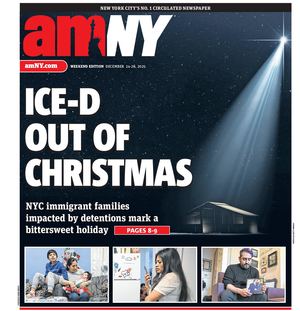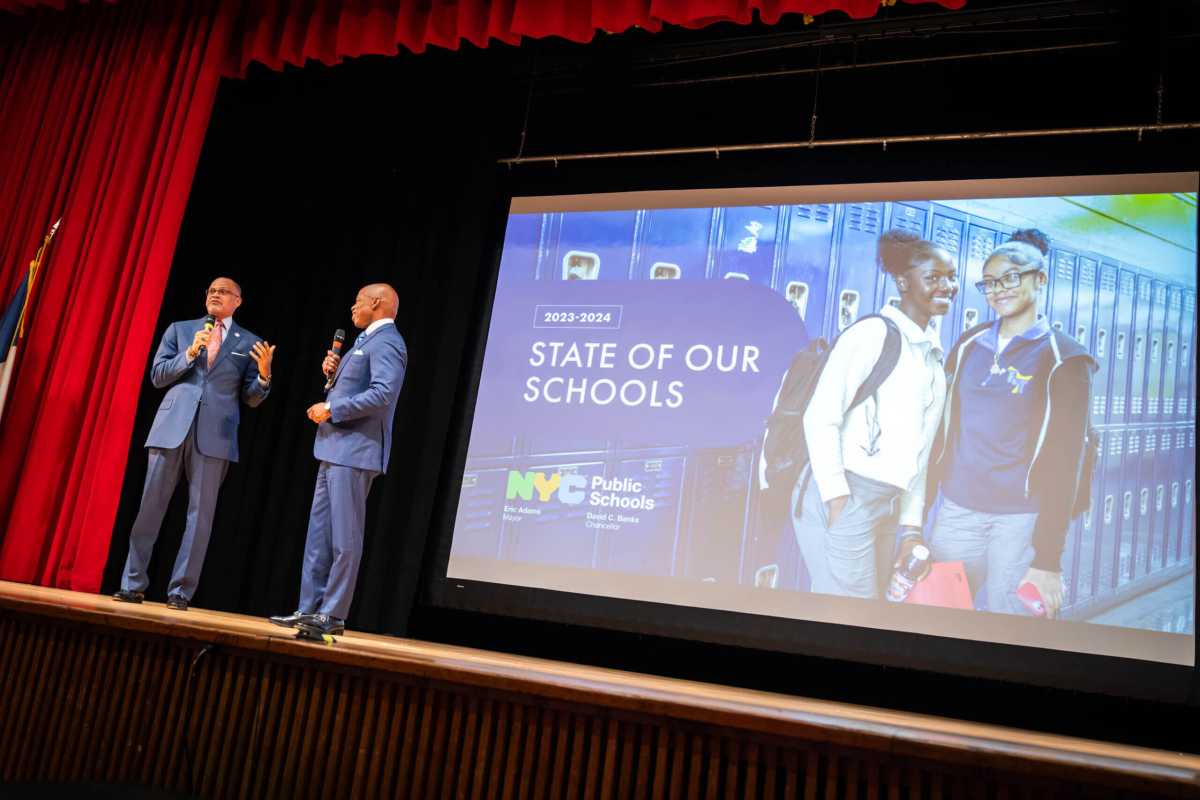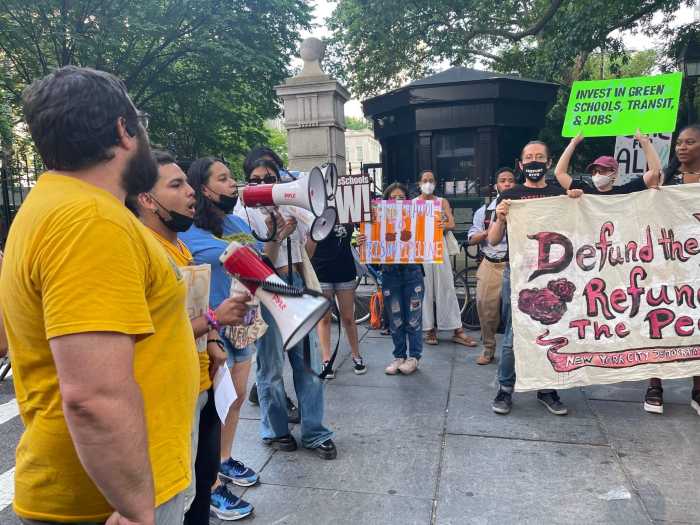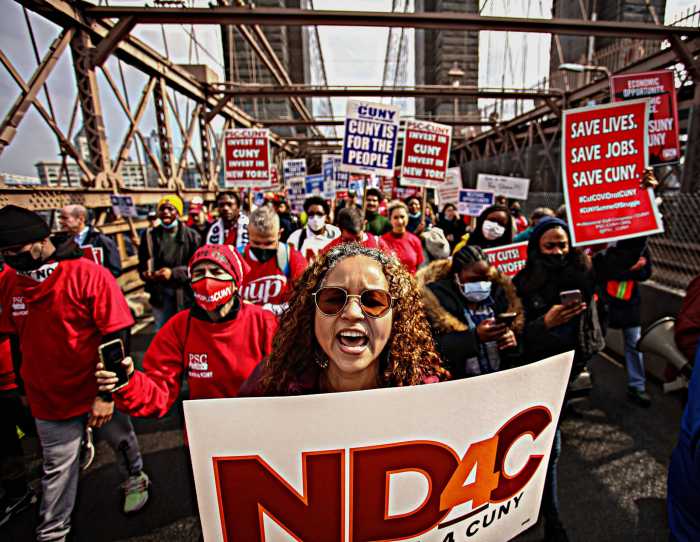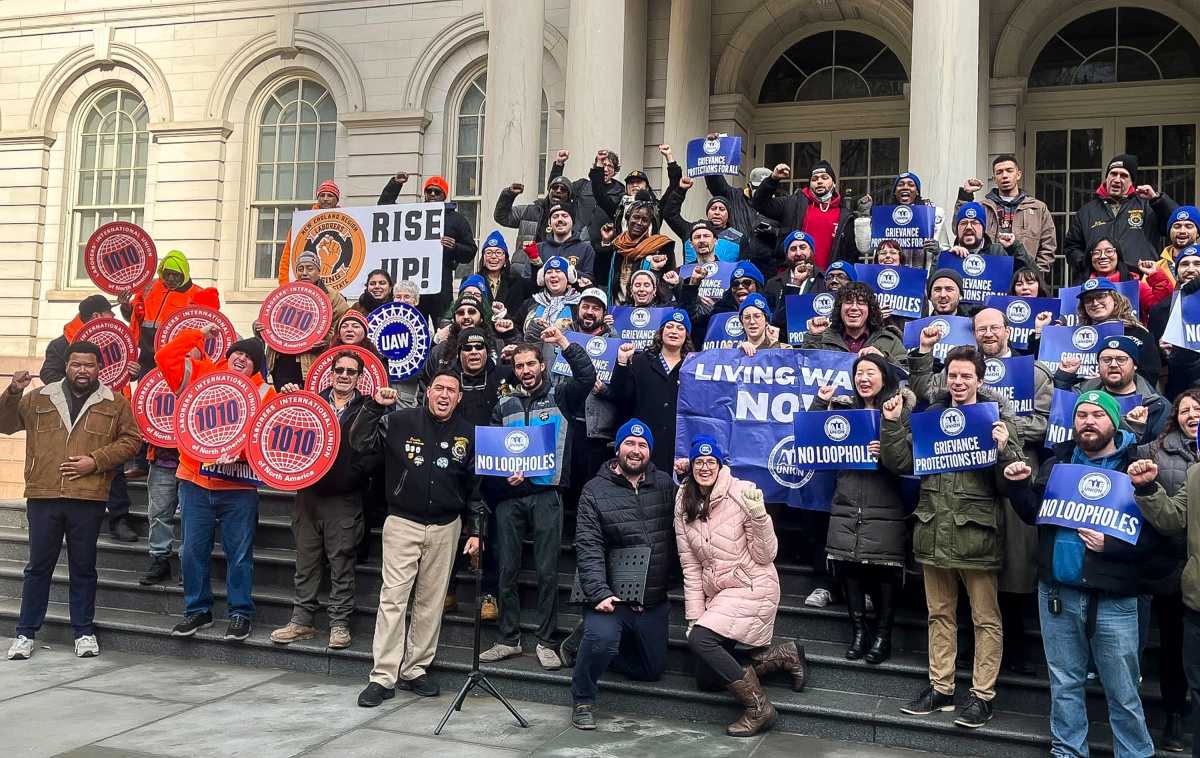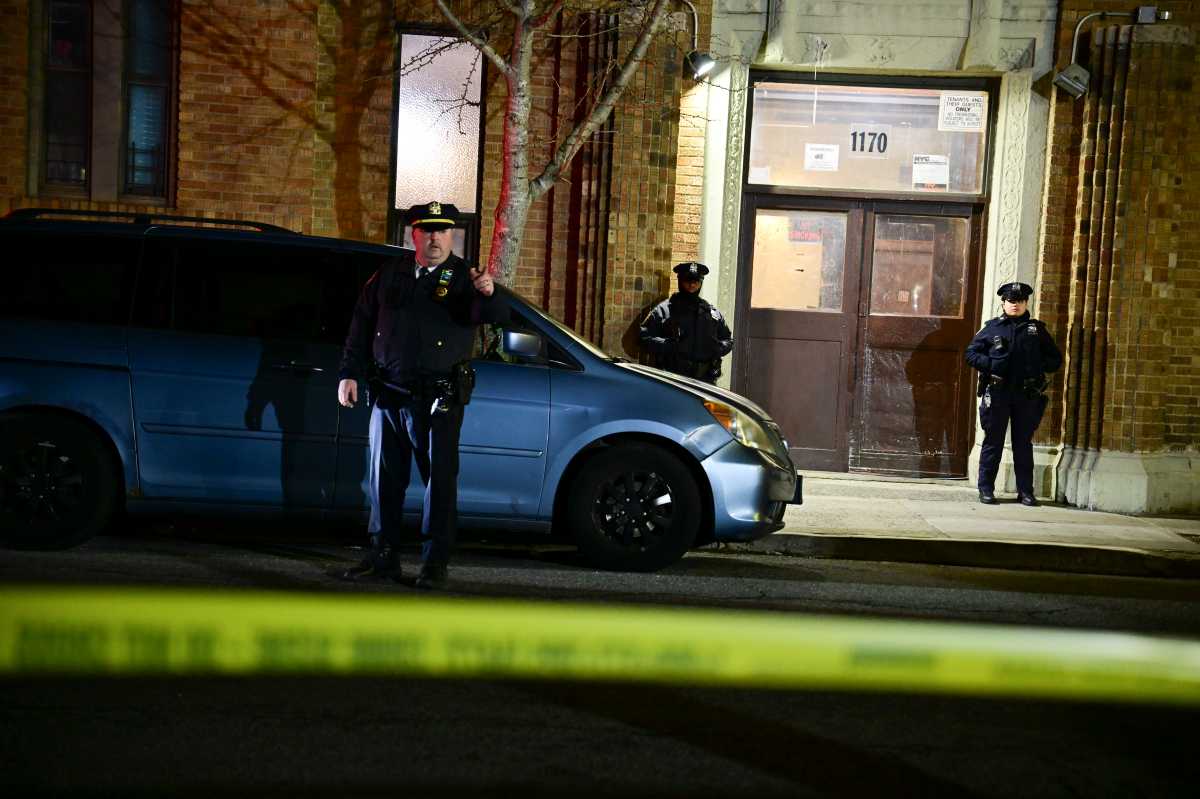Improving literacy, engaging children and preparing high schoolers for the future were among the key points of Schools Chancellor David Banks’ Wednesday “State of Our Schools” address, delivered at one of Brooklyn’s most historic high schools.
At The Boys and Girls School — the oldest public high school in Brooklyn — Banks provided updates on the New York City Department of Education’s progress, outlined commitments for the new school year, and laid bare what work still needs to be done.
“The start of the school year brings so much possibility,” Banks said at the start of his address. “I want us to begin with this simple, but complex question: What is the purpose of school?”
If there isn’t a clear answer to this question, Banks said, there is no goal — and no possibility of growth. Looking ahead to the new school year (and seeking to answer that very question), Banks said his administration hopes to avoid “simply going through the motions” and what he calls “the routinization of school.”
“The reason that we do this work is to ensure that each student graduates on a pathway to a rewarding career and long-term economic security, equipped to be a positive force for change,” Banks said. “That is certainly the mission of this administration.”
For this to happen, Banks said that students must be given foundational skills, and that they must be educated in literacy, safety and emotional wellness, leadership, and financial sustainability, among other key life lessons.
Literacy and NYC Reads: ‘Getting our system back to where it needs to be’
Banks and New York City Mayor Eric Adams announced in May the launch of a new initiative, NYC Reads, to intervene with declining reading levels and ensure every student is reading at their appropriate grade level by the third grade. Banks acknowledged that many New York City students are currently entering middle and high schools “already two or three grade levels behind.”
“We met with our superintendents, our school principals, making sure that whatever resources to drive this literacy agenda,” Banks said. “It is a critical first step for us and getting our system back to where it needs to be.”
Banks said Wednesday that the administration has “trained thousands of educators in the science of reading,” and that it will “universally screening” students to identify which children are at risk for dyslexia. The chancellor assured that the administration is “laser focused” on intervening before reading issues begin.
“We’re putting literacy experts in our classrooms side by side with our teachers and leaders to provide real-time feedback, coaching at a scale that our school system has never seen before,” Banks said. “It will empower both our students as well as our educators.”
The administration is also lauding the end of the literacy program at Columbia University’s Teachers College, where Banks said many of the city’s public school teachers were trained.
“At long last, Teachers College finally disbanded its balanced literacy program,” Banks said at the address.
In a statement on Sept. 8, the Teachers College announced that it would dissolve its Reading and Writing Project and transition to an Advanced Literacy unit for the 2023-24 school year. The college called the decision “a return to its original professional development roots.”
Launching a new math curriculum and expanded programming
While building on reading and literacy levels, the administration is also looking at ways to improve math levels, bilingual programs, and student mental health and wellbeing.
“We know there’s work to be done to improve our math playbook,” Banks said.
The chancellor noted that the administration is “already zooming in on Algebra 1” and starting with the foundations. To do this, the education department is launching a curriculum in more than 250 high schools, along with intensive professional development, Banks said. He added that the approach will consider students’ cultures to empower and encourage students.
“Over the coming years, we’re going to announce new approaches to instruction across all core subject areas in all grade levels, just as we have for early literacy through NYC Reads,” Banks said.
The administration has opened dozens of new bilingual programs and 36 Gifted & Talented programs since last fall, Banks said, adding that there will be another 1,000-plus seats coming to the city’s specialized programs for students with disabilities. This way, Banks said, “families can access a high-quality education closer to where they live, rather than having to travel across the city.”
“We’re going to do it in a way that upholds our vision,” Banks said. “Every family in New York City has an opportunity to give their child a bright start.”
Banks also provided an update for the telehealth program for public high schoolers, originally announced during Mayor Adams’ second State of the City address in January. He said Wednesday that it will launch in December.
‘Every single one of our students will leave us with a concrete plan’
The chancellor also touched upon the importance of preparing students for life beyond school by setting them up for college readiness, financial literacy and career success. Banks stressed the consequences of allowing students to fall between the cracks. He referenced a violent Tuesday afternoon stabbing involving three teenagers outside of Brownsville Academy High School in Brooklyn.
“Kids who do that are mired in darkness,” Banks said. “They don’t see beyond today. That’s our failure.”
The chancellor pointed to past graduation rates of the New York City public school system. In 2011, there were 74,000 ninth graders but roughly 52,000 had graduated from high school. Somewhere along the way, there were 22,000 students who dropped out, he said.
“Historically, too many 12th graders leave our system with a diploma and not much else,” Banks explained. “This pattern has repeated across our school system year after year.”
He ensured that, by 2030, every student will leave the New York City public school system with “a concrete plan for a rewarding life path.” That plan will include access to paid work experience, early college credit, career credentials, financial and digital literacy, and mentorship and guidance, he said. “This is not your grandparents’ vocations. What we’re looking at today is something very different.”
The aim is to expose and lead public school students towards jobs that are in high demand, such as cybersecurity, software development, diagnostic medicine, business management and more, Banks said.
To help ready high schoolers for the real world, the chancellor said the state’s City University of New York and State University of New York systems will be more involved in the administration’s efforts to provide its students with early college transitions.
Banks announced that, for the first time ever this fall, Chancellor Félix V. Matos Rodríguez and the New York City Department of Education “will be sending a letter to all New York City public school seniors confirming that there’s a place for them at the City University of New York.”
SUNY will also join forces with the FutureReadyNYC initiative, a partnership between the DOE and CUNY, to provide early college credits for students. To support the matter, Banks said that the administration is considering more remote schooling options for students. There are already two remote options — one fully virtual and one hybrid — for high school students.
“We are working toward a time where every high schooler and many middle schoolers can opt in to high quality, online coursework that is more flexible and provides more opportunities than a standard brick-and mortar-classroom,” Banks said. “Our kids should not be limited by the four walls of their classroom.”
The administration has its eye on the recent state test scores, released Sept. 12, and will have a more “definitive analysis from the state hopefully in about a week,” Banks said. He hinted that the test results are “extremely encouraging.”
“We’re seeing more of our students on grade level and meeting the state’s new learning standards with significant gains in math and increases in ELA (English Language Arts) as well,” Banks said. “We’ll be able to speak to this much more specifically.”
Banks ended his address by encouraging parents to be more proactively involved in their children’s lives. Among his recommendations were, reading every day, connecting with principals and parent coordinators, getting involved in parent teacher associations, and meeting other families and parent leaders in their schools and districts.
He acknowledged in his speech that the school system has wronged a lot of its parents, but that there is a promising future ahead.
“For some of these promises, we know we have a long way to go, but I know that the best is yet to come,” Banks said. “We have to have a very different approach. Today marks the beginning of a very different approach for New York City public schools.”
